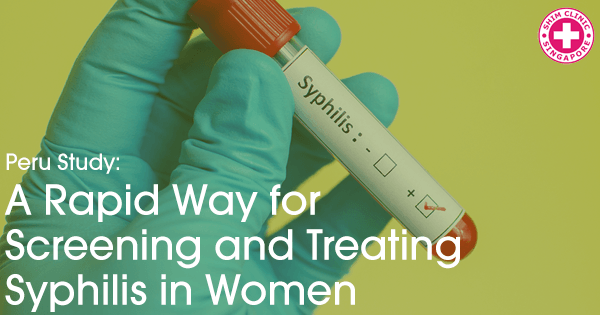Research from the World Health Organization shows that a yearly estimate of 1.5 million women who are expecting gets infected by syphilis. The most commonly used form of treatment for the disease is Penicillin. When treated early with Penicillin (20 weeks before gestation), serious complications can be avoided and we can reduce the probability of the child being born with a syphilis infection.
However, women in many settings have challenges when it comes to screening, delayed results and for infected women; they fail to seek medical assistance. All is not lost in the quest to treat syphilis. Rapid syphilis test results are available after only about 20 mins thus making it possible to have testing as well as treatment all done within the same day.
Cost Effectiveness Comparison
In 2010, Patricia Mallma, Patricia Garcia1, Cesar Carcamo, Sergio Torres-Rueda, Rosanna Peeling, David Mabey, and Fern Terris-Prestholt conducted a comparison study in Peru on the cost effectiveness between point-of-care STD testing (Rapid Syphilis Test) and standard of care (Rapid Plasma Reagin, RPR) for reproductive care services in the country. The research was carried out in two different settings where the prevalence of syphilis infection is low:
- A maternity hospital in the country that is known for having the highest number of child deliveries.
- Ventanilla network of sixteen health facilities because RST was already implemented alongside rapid HIV testing.
The costs on RPR were majorly on laboratory supplies, space rental, allocated staff salaries and treatment costs while costs for RST included expenses for implementation activities and implementing the QA system.
The study also collected and analyzed data on the number of women tested in each facility, the number of women with reactive tests for syphilis and the number of women treated for the STD.
Sensitivity Analysis
A sensitivity analysis was carried out to determine the impact of costs and output while examining factors such as the discount rate, working hours of health workers, screening rates for syphilis, the exchange rate from US dollars to Peruvian new soles, prevalence of the disease and salaries paid to the health personnel.
The study proved that there was a higher number of test results coming back positive when using RST tests as opposed to when RPR tests were used. This is because:
- RPR tests are performed in a poor manner. Analysis revealed that 50% of the missed results was due to several factors such as inadequate equipment and proper procedures not being followed.
- RST tests detect women with syphilis irrespective of whether they have recent infections or past treated infections.
- Screening and treatment coverage was also higher using RST.
The study also revealed some vital strengths that could be beneficial to the health sector. One such strength is that the study includes the costs for implementation which could be helpful to countries aiming to start RST tests.
The other strength is that countries with a low prevalence of syphilis can use the RST tests which are cost effective. This is especially important to countries as those in Latin America region as they are keen on eliminating congenital syphilis.
Our Take
RST tests are a more economically efficient way to screen and treat syphilis. It is now upon the players in the health sector across the globe to acknowledge the benefits of the RST and implement its use towards better screening and treatment of syphilis.

